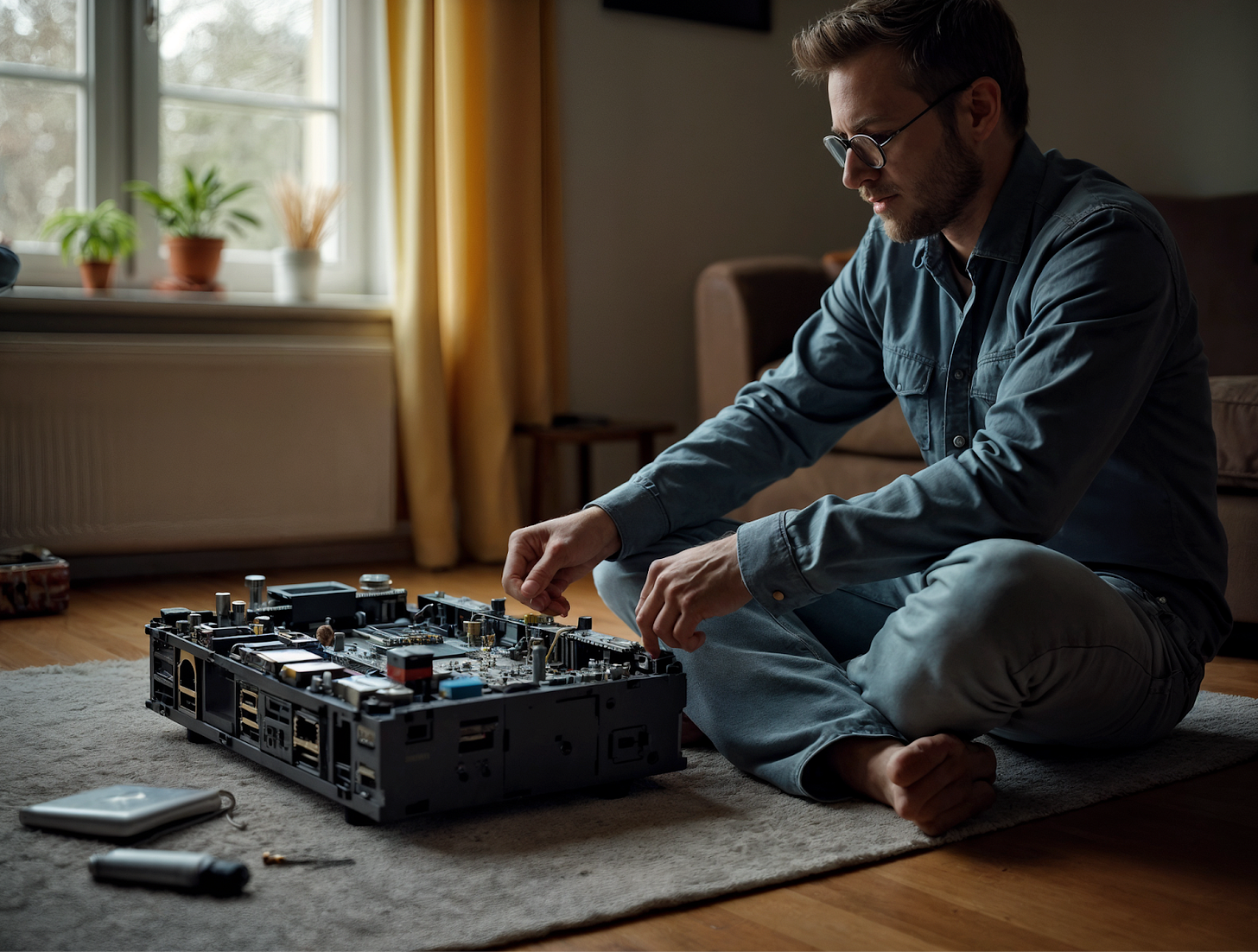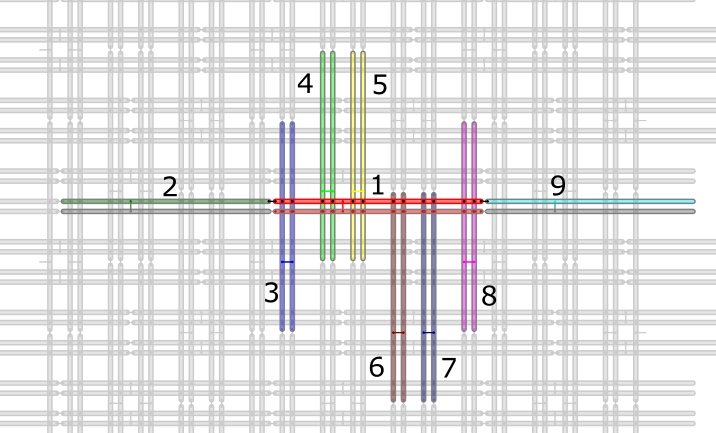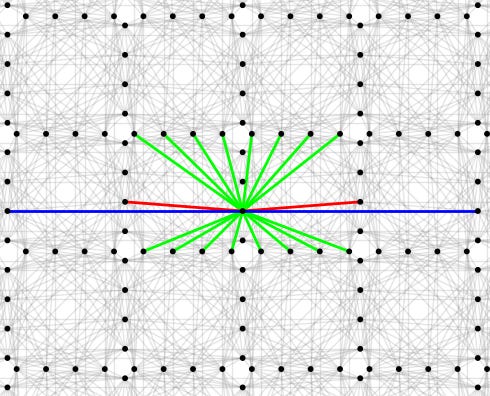Quantum Computing Must Solve These 2 Problems Before the Technology Takes Off
Be patient. We’re moving in the right direction

AI isn’t the only technology driving the current bull market. It’s just the most obvious one.
A lot is going on in the quantum computing space.
Companies already sell quantum computers and access to them
There’s huge interest from institutional investors
The respective stocks have grown 10x over the past year
And the technology is still light years away from saturation.
How do I know?
There are two main challenges quantum computing is frantically trying to solve.
More qubits add complexity
A quantum computer is not a typical PC with a system block, a monitor, and a keyboard. It’s more like a fancy lab experiment.
Quantum computers rely on the superposition principle from quantum mechanics. Their qubits exist in states 0 and 1 at the same time.
The qubits can sense each other. The state of one depends on the states of those around it. And when you increase the number of qubits, the computer’s total number of states grows exponentially.
Because qubits can perform calculations in parallel, quantum computers are faster than classical computers. It’s like solving a jigsaw puzzle where every piece finds its place simultaneously, not one after the other.
This concept was proven in a recent experiment by the company D-Wave Quantum. It assembled 4,800 qubits on a wafer and ran mathematical simulations of a complex magnetic material.
Qubits were essentially tiny loops of superconducting wire. 0s and 1s correspond to the opposite current directions in the wires.
D-Wave’s quantum computer did in minutes what would’ve taken the most powerful classical computer a million years.
That quantum computers are incomparably faster is one perk. Another is they need way way way less energy for those complex tasks (think of how much energy a classical computer will consume in a million years).
D-Wave’s quantum computers are available via the cloud in more than forty countries at this time. The technology is already there.
But it’s not all breeze, peeps.
Universal quantum computers don’t exist. The currently available technological masterpieces are good for specific tasks in finance, manufacturing, and drug discovery.
Moreover, scaling up is a problem.
You want to use as many qubits as possible for maximum efficiency. But as the number of qubits increases, the computers get increasingly complex.
D-Wave’s chips operate at almost -273 degrees Celsius. You can’t simply place more qubits on the wafer.
You need to keep the connectivity among the qubits.
A second major problem is keeping the extreme cooling stable, which limits the thermal flow affecting qubit readouts.
Plus you need a device called a dilution refrigerator to cool down the qubits in the first place. It costs a million bucks. Only state-of-the-art research labs can afford it.
The company IonQ uses ions trapped in vacuum chambers. It shines light on those ions to ease them into the states that correspond to 0 and 1. This happens close to room temperature.
The qubits are the ions themselves. Individual ions seem an even better choice for qubits than D-Wave’s superconducting wires. You don’t need to “manufacture” them. The ions are all identical and much smaller. That should make them more reliable and easier to control.
In theory.
Because the more ions you add to the chamber, the harder it gets to have them under control. IonQ is grappling with the same problem as D-Wave Quantum.
And the trapped-ion technology uses fewer than 100 qubits in its experimental demonstrations compared to D-Wave’s 4,800. It’s a large difference but there’s a trade-off: Those 100 qubits better preserve quantum information (they’re more “stable”), whereas the 4,800 qubits prioritize scale but are more susceptible to noise.
Yes, noise is a pain in the a$$ in quantum computers. Here’s what D-Wave Quantum and IonQ are doing to overcome it.
You can’t eliminate noise but you can reduce it
D-Wave Quantum’s qubits are superconducting wires placed on a wafer.
The wires are tiny (their size is a few micrometers). Fabricating them produces defects. Some of those 4,800 qubits will be flawed and cause noise.
The qubits’ performance depends on temperature stability. But occasional thermal fluctuations perturb their superconducting state.
Finally, the qubits are coupled to each other. This “quantum entanglement” is crucial in quantum computing. But it also produces unintended interactions that degrade the performance of the respective quantum computer.
It’s hard to deal with the defects (the company outsources chip fabrication) and thermal fluctuations (they’re random). So D-Wave Quantum is addressing the impact of the unintended interactions by rearranging the qubits.
This is what the coupling used to look like (the colored loops show interconnected qubits on a chip):

And this is D-Wave Quantum’s new design called Zephyr:

The details of the coupling don’t matter but you may see it’s a complex issue.
The Zephyr topology leads to four times less noise and better connectivity among the qubits. The new qubit arrangement will allow D-Wave Quantum to hit 7,000 interconnected qubits on a single wafer.
IonQ faces different challenges due to the trapped-ion technology it’s developing.
Lasers that shine on those ions in a vacuum happen to be unstable. Fluctuations in the laser frequency, intensity, and phase don’t allow precise control of the ions’ quantum states.
The vacuum is never perfect either. The ions happen to collide with the atoms of the background gas.
The ions also interact with each other via electrostatic forces. This causes unintended entanglement and shifts the atoms’ energy levels. And external electromagnetic fields perturb the ions’ states further.
IonQ developed an error correction method called CliNR (Clifford Noise Reduction). It’s a clever algorithm that identifies noise patterns from real-time measurements and reconstructs the intended quantum state.
CliNR reduces the noise by a factor of two. It’s a good result but IonQ still has a way to go.
For both D-Wave Quantum and IonQ, the current state-of-the-art solutions to reduce noise are temporary. The more qubits, the harder it is to correct the noise in the system.
I believe both companies will solve the technological challenge. At one point it was hard to deal with 100 superconducting qubits, and now we’re looking at 4,800 for D-Wave Quantum.
But once quantum computers approach, say, 100,000 qubits, we’ll probably need another technological breakthrough to deal with the noise.
The takeaway
I’m positive about quantum computing because the respective companies already have a product to sell.
Beyond making its technology available through the cloud, D-Wave Quantum sold its quantum computer to a research center in Germany.
IonQ’s computers are also available via the cloud. The company has already sold its quantum computers to the United States Air Force Research Laboratory, the Swiss company QuantumBasel, and Oak Ridge National Laboratory.
To be up to date on quantum computers, keep an eye on the respective companies’ sales, the scaling up of their devices, and what they do for error correction.
The companies’ financials are weak due to the huge R&D and Sales expenses and small inconsistent revenues. But they’re moving in the right direction due to the aggressive investments in R&D and Sales.
This is not my opinion, it’s a fact. Institutional investors are aggressively accumulating quantum computing stocks. Some of these companies could multiply your investment another ten times.
Quantum computing is the future.
This article is for informational purposes only. It should not be considered Financial or Legal Advice. Not all information will be accurate. Consult a financial professional before making any major financial decisions.
P.S. If you want to stay up to date on the new technologies coming to the market and make well-informed investing decisions, hit the subscribe button.




Love these writeups, Denis. No one describes quantum computing issues as clearly as you do. Thanks for the insights!
I am absolutely fascinated and totally confused when it comes to quantum computers I’ve been studying them for a couple of years now and I am no closer to understanding that I was when I started. Thanks for opening up the conversation.